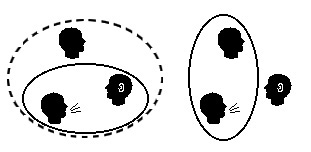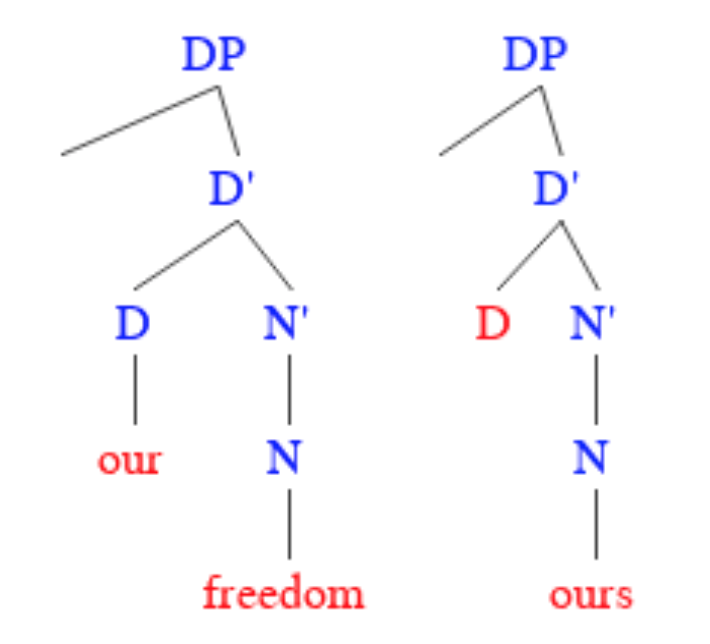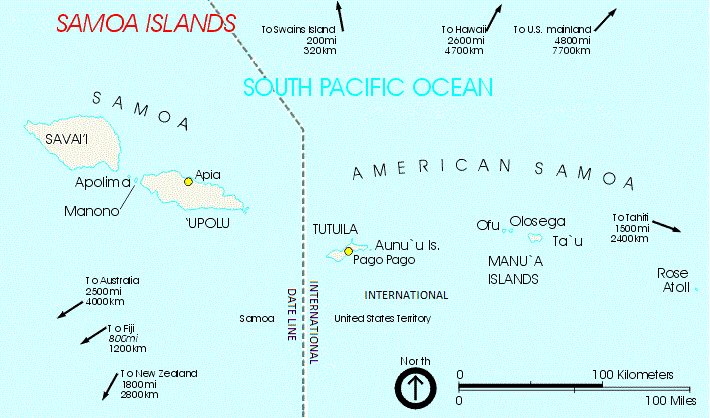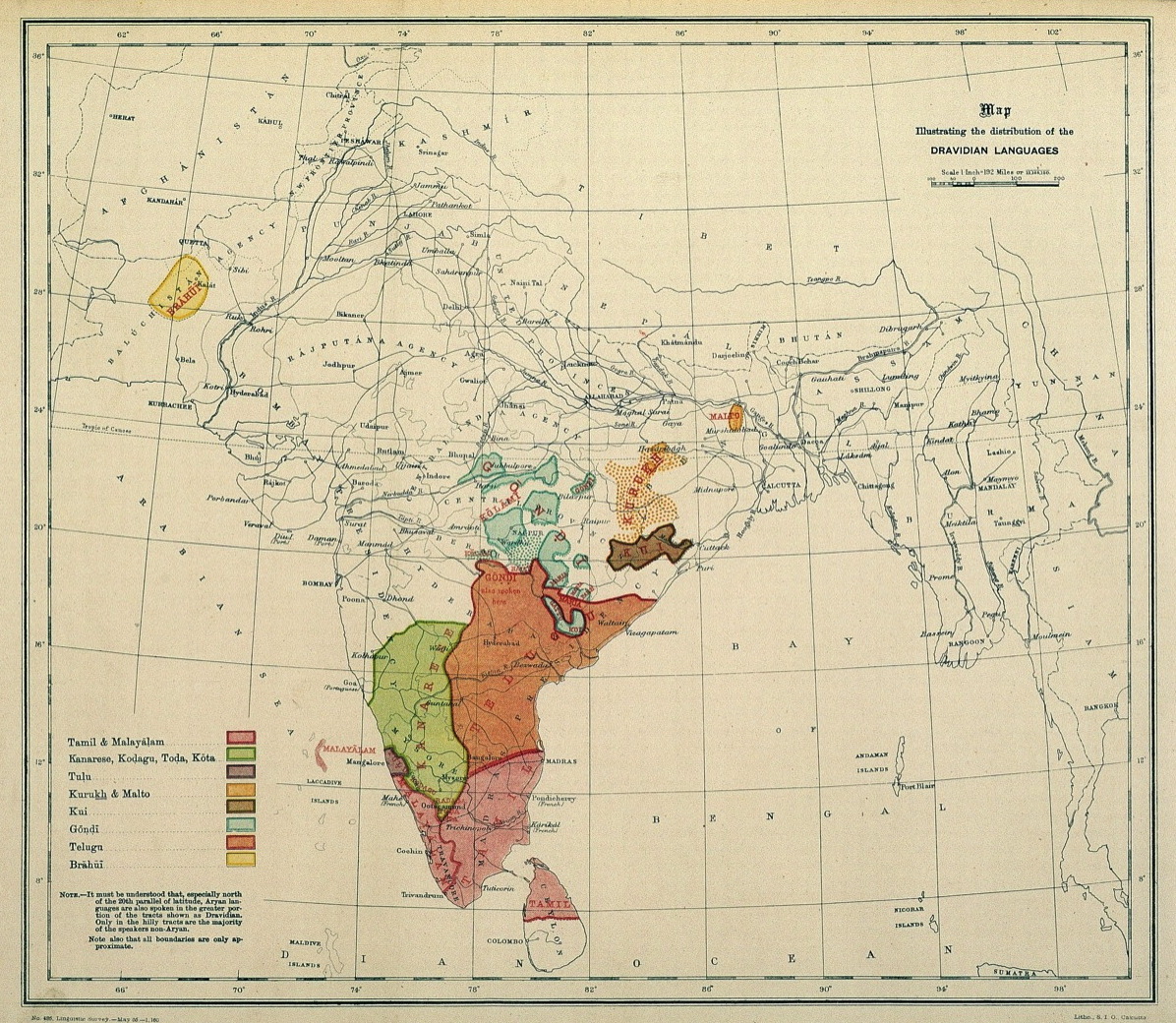|
Clusivity
In linguistics, clusivity is a grammatical distinction between ''inclusive'' and ''exclusive'' first-person pronouns and verbal morphology, also called ''inclusive " we"'' and ''exclusive "we"''. Inclusive "we" specifically includes the addressee, while exclusive "we" specifically excludes the addressee; in other words, two (or more) words that both translate to "we", one meaning "you and I, and possibly someone else", the other meaning "me and some other person or persons, but not you". While imagining that this sort of distinction could be made in other persons (particularly the second) is straightforward, in fact the existence of second-person clusivity (you vs. you and they) in natural languages is controversial and not well attested. While clusivity is not a feature of the English language, it is found in many languages around the world. The first published description of the inclusive-exclusive distinction by a European linguist was in a description of languages of Peru in ... [...More Info...] [...Related Items...] OR: [Wikipedia] [Google] [Baidu] |
Grammatical Person
In linguistics, grammatical person is the grammatical distinction between deictic references to participant(s) in an event; typically, the distinction is between the speaker ( first person), the addressee ( second person), and others ( third person). A language's set of pronouns is typically defined by grammatical person. ''First person'' includes the speaker (English: ''I'', ''we''), ''second person'' is the person or people spoken to (English: ''your'' or ''you''), and ''third person'' includes all that are not listed above (English: ''he'', ''she'', ''it'', ''they''). It also frequently affects verbs, and sometimes nouns or possessive relationships. Related classifications Number In Indo-European languages, first-, second-, and third-person pronouns are typically also marked for singular and plural forms, and sometimes dual form as well (grammatical number). Inclusive/exclusive distinction Some other languages use different classifying systems, especially in the p ... [...More Info...] [...Related Items...] OR: [Wikipedia] [Google] [Baidu] |
Malecite-Passamaquoddy Language
Peskotomuhkati-Wolastoqey ( or Maliseet-Passamaquoddy ( ; ''skicinuwatuwewakon'' or ''skicinuwi-latuwewakon'') is an endangered Algonquian language spoken by the Wolastoqey and Passamaquoddy peoples along both sides of the border between Maine in the United States and New Brunswick, Canada. The language consists of two major dialects: Maliseet, which is mainly spoken in the Saint John River Valley in New Brunswick; and Passamaquoddy, spoken mostly in the St. Croix River Valley of eastern Maine. However, the two dialects differ only slightly, mainly in their phonology. The indigenous people widely spoke Maliseet-Passamaquoddy in these areas until around the post-World War II era when changes in the education system and increased marriage outside of the speech community caused a large decrease in the number of children who learned or regularly used the language.Leavitt, Robert M. ''Passamaquoddy-Maliseet''. 1996. Newcastle: Lincom Europa. As a result, in both Canada and the U.S. ... [...More Info...] [...Related Items...] OR: [Wikipedia] [Google] [Baidu] |
Pronoun
In linguistics and grammar, a pronoun (Interlinear gloss, glossed ) is a word or a group of words that one may substitute for a noun or noun phrase. Pronouns have traditionally been regarded as one of the part of speech, parts of speech, but some modern theorists would not consider them to form a single class, in view of the variety of functions they perform cross-linguistically. An example of a pronoun is "you", which can be either singular or plural. Sub-types include personal pronoun, personal and possessive pronouns, reflexive pronoun, reflexive and reciprocal pronoun, reciprocal pronouns, demonstrative pronouns, relative pronoun, relative and interrogative pronouns, and indefinite pronouns. The use of pronouns often involves anaphora (linguistics), anaphora, where the meaning of the pronoun is dependent on an antecedent (grammar), antecedent. For example, in the sentence ''That poor man looks as if he needs a new coat'', the meaning of the pronoun ''he'' is dependent on its ... [...More Info...] [...Related Items...] OR: [Wikipedia] [Google] [Baidu] |
Samoan Language
Samoan ( or , ) is a Polynesian languages, Polynesian language spoken by Samoans of the Samoan Islands. Administratively, the islands are split between the sovereign country of Samoa and the Unincorporated territories of the United States, United States territory of American Samoa. It is an official language, alongside English language, English, in both jurisdictions. It is widely spoken across the Pacific region, heavily so in New Zealand and in Australia and the United States. Among the Polynesian languages, Samoan is the most widely spoken by number of native speakers. Samoan is spoken by approximately 260,000 people in the archipelago and with many Samoans living in diaspora in a number of countries, the total number of speakers worldwide was estimated at 510,000 in 2015. It is the third-most widely spoken language in New Zealand, where 2.2% of the population, 101,900 people, were able to speak it as of 2018. The language is notable for the phonology, phonological differenc ... [...More Info...] [...Related Items...] OR: [Wikipedia] [Google] [Baidu] |
Kunama Language
The Kunama language has been included in the proposed Nilo-Saharan languages, Nilo-Saharan language family, though it is distantly related to the other languages, if at all. Kunama is spoken by the Kunama people of the Gash-Barka Region in western Eritrea and just across the Ethiopian border. The language has several dialects including: Barka, Marda, Aimara, Odasa, Tika, Lakatakura, Sokodasa, Takazze-Setit and Tigray. Ilit language, Ilit and Bitama language, Bitama are not mutually intelligible and so may be considered distinct languages. There have been some use of the Kunama language in publications. "The first Bible translation product in Kunama was the Gospel of Mark prepared by Andersson and published in 1906." Phonology Consonants * is only of marginal status. * are labialized as after back vowels. * is heard as aspirated in syllable-initial position. Vowels * can be heard as when in unstressed syllable position. See also *Wiktionary:Appendix:Kunama word ... [...More Info...] [...Related Items...] OR: [Wikipedia] [Google] [Baidu] |
Eritrea
Eritrea, officially the State of Eritrea, is a country in the Horn of Africa region of East Africa, with its capital and largest city being Asmara. It is bordered by Ethiopia in the Eritrea–Ethiopia border, south, Sudan in the west, and Djibouti in the southeast. The northeastern and eastern parts of Eritrea have an extensive coastline along the Red Sea. The nation has a total area of approximately , and includes the Dahlak Archipelago and several of the Hanish Islands. Hominid remains found in Eritrea have been dated to 1 million years old and anthropological research indicates that the area may contain significant records related to the evolution of humans. The Kingdom of Aksum, covering much of modern-day Eritrea and Tigray Region, northern Ethiopia, was established during the first or second century AD.Henze, Paul B. (2005) ''Layers of Time: A History of Ethiopia'', . It adopted Eritrean Orthodox Church, Christianity around the middle of the fourth century. Beginning in ... [...More Info...] [...Related Items...] OR: [Wikipedia] [Google] [Baidu] |
Dual (grammatical Number)
Dual ( abbreviated ) is a grammatical number that some languages use in addition to singular and plural. When a noun or pronoun appears in dual form, it is interpreted as referring to precisely two of the entities (objects or persons) identified by the noun or pronoun acting as a single unit or in unison. Verbs can also have dual agreement forms in these languages. The dual number existed in Proto-Indo-European and persisted in many of its descendants, such as Ancient Greek and Sanskrit, which have dual forms across nouns, verbs, and adjectives; Gothic, which used dual forms in pronouns and verbs; and Old English (Anglo-Saxon), which used dual forms in its pronouns. It can still be found in a few modern Indo-European languages such as Irish, Scottish Gaelic, Lithuanian, Slovene, and Sorbian languages. The majority of modern Indo-European languages, including modern English, have lost the dual number through their development. Its function has mostly been replaced by the s ... [...More Info...] [...Related Items...] OR: [Wikipedia] [Google] [Baidu] |
Lionel Bender (linguist)
Marvin Lionel Bender (August 18, 1934 – February 19, 2008) was an American linguist. Life Bender was born August 18, 1934, in Mechanicsburg, Pennsylvania. He travelled throughout the world, particularly in Northeast Africa, and was an accomplished chess player. Dr. Bender died of complications from a stroke and brain hemorrhage on February 19, 2008, in Cape Girardeau, Missouri, Cape Girardeau, Missouri. Career Bender wrote and co-wrote several books, publications and essays on the languages of Africa, particularly those spoken in Ethiopia and Sudan, and was a major contributor to Ethiopian Studies. He did extensive work on the Afro-Asiatic languages, Afro-Asiatic and Nilo-Saharan languages, Nilo-Saharan languages spoken locally. Together with J. Donald Bowen, Robert L. Cooper, and Charles A. Ferguson, Bender carried out the Survey of Language Use and Language Teaching in East Africa, funded by the Ford Foundation in 1968-1970. He later conducted other research sponsored by th ... [...More Info...] [...Related Items...] OR: [Wikipedia] [Google] [Baidu] |
Linguistics
Linguistics is the scientific study of language. The areas of linguistic analysis are syntax (rules governing the structure of sentences), semantics (meaning), Morphology (linguistics), morphology (structure of words), phonetics (speech sounds and equivalent gestures in sign languages), phonology (the abstract sound system of a particular language, and analogous systems of sign languages), and pragmatics (how the context of use contributes to meaning). Subdisciplines such as biolinguistics (the study of the biological variables and evolution of language) and psycholinguistics (the study of psychological factors in human language) bridge many of these divisions. Linguistics encompasses Outline of linguistics, many branches and subfields that span both theoretical and practical applications. Theoretical linguistics is concerned with understanding the universal grammar, universal and Philosophy of language#Nature of language, fundamental nature of language and developing a general ... [...More Info...] [...Related Items...] OR: [Wikipedia] [Google] [Baidu] |
Dravidian Languages
The Dravidian languages are a language family, family of languages spoken by 250 million people, primarily in South India, north-east Sri Lanka, and south-west Pakistan, with pockets elsewhere in South Asia. The most commonly spoken Dravidian languages are (in descending order) Telugu language, Telugu, Tamil language, Tamil, Kannada, and Malayalam, all of which Classical languages of India, have long literary traditions. Smaller literary languages are Tulu language, Tulu and Kodava language, Kodava. Together with several smaller languages such as Gondi language, Gondi, these languages cover the southern part of India and the northeast of Sri Lanka, and account for the overwhelming majority of speakers of Dravidian languages. Malto language, Malto and Kurukh language, Kurukh are spoken in isolated pockets in eastern India. Kurukh is also spoken in parts of Nepal, Bhutan and Bangladesh. Brahui language, Brahui is mostly spoken in the Balochistan region of Pakistan, Sistan and Baluc ... [...More Info...] [...Related Items...] OR: [Wikipedia] [Google] [Baidu] |
North Caucasian Languages
The North Caucasian languages, sometimes called simply Caucasic, is a proposed language family consisting of a pair of well established language families spoken in the Caucasus, predominantly in the north, consisting of the Northwest Caucasian family (also called ''Pontic, Abkhaz–Adyghe, Circassian,'' or ''West Caucasian'') and the Northeast Caucasian family (also called ''Nakh–Dagestanian'', ''Caspian'' or ''East Caucasian''). There are some 34 to 38 distinct North Caucasian languages. The Kartvelian languages, including Georgian, Zan and Svan, were once known as South Caucasian. However, they are no longer considered related to the North Caucasian languages and are classified as an independent language family. Some linguists, notably Sergei Starostin and Sergei Nikolaev, believe that the two groups sprang from a common ancestor about five thousand years BCE.Nikolayev, S., and S. Starostin. 1994 ''North Caucasian Etymological Dictionary''. Moscow: Asterisk PressAvailabl ... [...More Info...] [...Related Items...] OR: [Wikipedia] [Google] [Baidu] |






